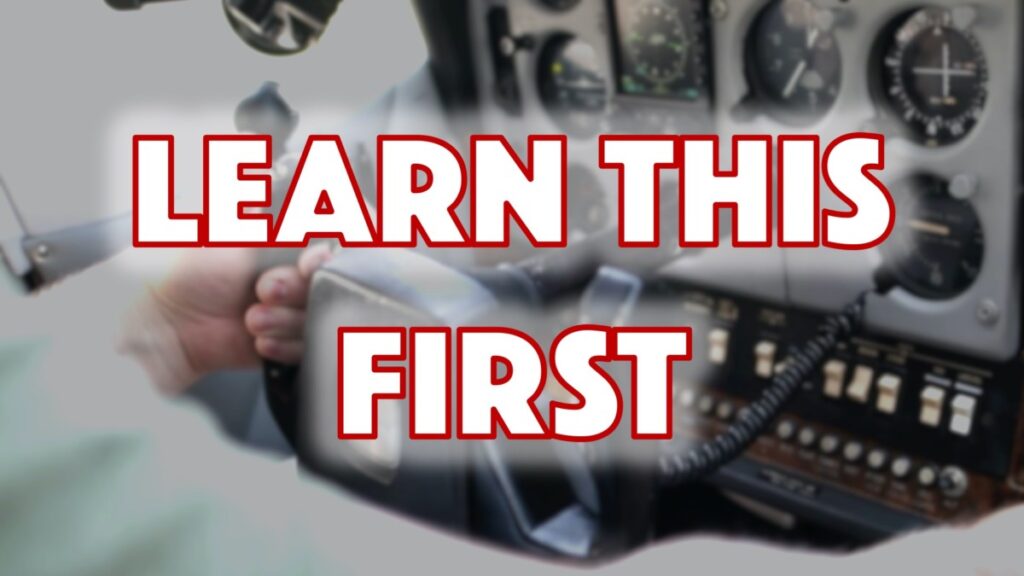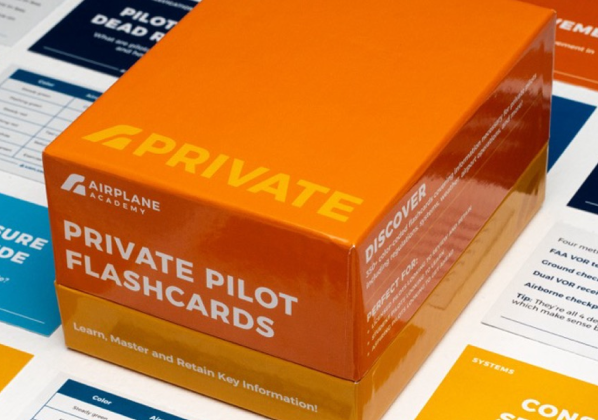
I remember my very first flight lesson. I was 14 years old, sitting in the front of a 1970 Piper Super Cub with my instructor behind me. I had gotten buckled in and took a deep breath. “Okay so how do I start this thing?” I asked my instructor. I had wanted to learn to fly my whole life and was itching to get onto the runway and into the air, unsure of how to do either.
We taxied onto the runway. It was cold that day and we were taking off to the North. I saw the big runway numbers “32” pass beneath the little wheels of the cub as my instructor helped me bring in full throttle. I s-turned back and forth down the runway (as tailwheel aircraft tend to do before you know how to tame them) until we just had enough speed to lift off. I remember heading to the left thinking we were going off the runway but was able to pull up and fly just before it happened. It was a 14-year old version of a “mission impossible” getaway scene. I was hooked.
A couple decades, hundreds of flight hours, and several ratings later, I look back on that first lesson and still get a rush of excitement even thinking about it. But the first flight lesson can be sensory overload and it would have been helpful to learn a few things before that lesson.
If you’re out there excited and nervous for your first flight lesson, here are 9 things you should learn before taking your first flight lesson to make it a great success.
This post also appeared in video form on our YouTube Channel:
1. Nothing
I’ll start off by saying that even if you learn nothing before your first flight lesson, that’s perfectly fine. Remember that the point of taking flight lessons in the first place is just that… it’s a lesson. A learning environment. Every pilot in the world (including your instructor) was at once someone with zero flight time and no knowledge of aviation. So, everyone has to start somewhere.
2. Simple Physics of Flight
You’ll cover this in much more detail during your flight training, but it’s probably helpful to know before you go up in an airplane what exactly is making it fly. It comes down to simple physics around high and low pressure. High pressure will always “gravitate” towards low pressure, and the design of a wing is such that it creates high pressure on the underside of a wing, and low pressure on top of the wing. With enough airspeed and the right angle of attack (you’ll learn this is the direction of the wing (specifically the chord line of the wing) in relation to the relative wind), the wing flies.
It’s a pretty simple physics phenomenon that’s enabling you to fly an airplane, big or small! A lot of people will ask how in the world a 747 is able to fly with all that weight, but really it’s the same principles that allow a Cessna 172 to fly, just scaled up. In the same way that a cruise ship can float just like a jet ski can float, it’s the same principles just applied on a different scale.
You don’t need to know or have memorized the specific physics principles like Bernoulli’s principle, but know that it’s simple physics of high and low pressure keeping you up there.
3. Basic Flight Controls
If you’re going to learn to fly an airplane, it will be good for you to know what controls are even available to you in flight. The three axes (no not ax, but plural of axis) in flight are pitch (up and down movement relative to the horizon), yaw (left and right movement relative to the horizon), and roll (clockwise or counter-clockwise movement relative to the horizon).
Pitch and roll are controlled by the yolk (or stick, if your airplane is so equipped). Roll is pretty straight forward in that left and right inputs on the yolk produce left and right roll or bank of the airplane.
Pitch is inverted inputs, meaning that pushing forward on the yolk produces a nose-down attitude of the airplane, and pulling back on the yolk produces a nose-up attitude of the airplane. In other words, push forward to go down, and pull back to go up. Lots of people think it’s the other way around when they first start flying. You’ll get used to it very quickly.
Lastly, yaw is controlled by the rudder pedals with your feet. This is straightforward as well (not inverted), where pushing on the left rudder pedal will move the nose to the left, and pushing right will move the nose to the right. It also controls your steering on the ground. Other than correcting for wind angles with the yolk (which you’ll learn about), you will steer on the ground solely using your feet. People commonly try to reach for the yolk to steer the airplane on the ground (like it’s a car). Pretty simple once you get the hang of it!
4. What Happens in a Stall
A very common misconception about airplane stalls is that the airplane is just going to fall out of the sky like you’d see on a cartoon. This is absolutely not what happens when you stall the airplane. A stall occurs when the airplane has exceeded its critical angle of attack (not when it just gets too slow… this is a common misunderstanding and it doesn’t tell the whole story of why the airplane is actually stalling).
This simply means that there isn’t enough airflow over the wings to produce the necessary low and high pressure above and below the wings (respectively) to keep the airplane in level flight. Said another way, the airplane will start to lose altitude in a stall.
Depending on how aggressively you enter the stall, it can be a very docile maneuver and the airplane simply is in a nose-high attitude with a steady descent rate. Some airplanes might buffet (lightly shake… it’s perfectly normal and is the feeling of the air over the wings losing laminar flow and starting to tumble over the wing instead of smoothly follow it, like water over a rock in a stream) when they stall and then the nose will come down and in a certain direction, but again it can be very docile and nothing to fear.
All of this to say, you will end up practicing stalls so that you know how to feel them, anticipate them, and recover from them. But they are a perfectly normal flight maneuver and not something to fear.
I hear stories all of the time from non-pilots that went out flying with a buddy and were so scared that “he stalled the airplane.” This is a very normal thing and an important part of training. You probably won’t do it on the first flight lesson (though you might), but don’t be scared of it in the slightest.
5. The Phonetic Alphabet
Over the course of flight training you will learn that every letter has a phonetic pronunciation. A is alpha, b is bravo, c is Charlie, etc. There are many times that you will need to spell something over the radio, and in order to not confuse letters that sound similar (like b, c, e, p, etc.), each letter has been given a full name that is not easily confused with a similar sounding letter.
For example, the letters “b” and “e” would sound very similar over a crackled radio, and easy to confuse. But the words “bravo” and “echo” are very distinguishable. You’ll have to end up spelling all of kinds of things, like taxiway names, your tail number (covered in a moment), airport identifiers, and more. So this phonetic is used all of the time in aviation. Here it is:
A = Alpha
B = Bravo
C = Charlie
D = Delta (fun fact… on American Airlines flights, flight attendants will usually pronounce this to their passengers as “David” instead of “Delta” so as not to give a shout out to their competitor. But the correct term is Delta)
E = Echo
F = Foxtrot
G = Golf
H = Hotel
I = India
J = Juliet
K = Kilo
L = Lima (pronounced “Leema”… not “Ly-ma” like a lima bean)
M = Mike
N = November
O = Oscar
P = Papa
Q = Quebec
R = Romeo
S = Sierra
T = Tango
U = Uniform
V = Victor
W = Whiskey
X = X-Ray
Y = Yankee
Z = Zulu
You don’t need to necessarily have these memorized before your first flight, but it would definitely help. If you’re familiar with them though that might help you understand more of the radio chatter at least.
6. Your Airplane’s Tail Number
Every airplane has a unique alphanumeric ID assigned to it, and that’s what is used to identify yourself on the radio. So in the air, I’m no longer “Charlie”, but N916DF. In America all airplanes start with an “N” and that is usually left out when announcing yourself. So I would be Cessna (technically, Skylane, as that’s the model name of my Cessna 182) Nine (sometimes “Niner” if you want to be cool and cliché) One Six Delta Foxtrot.
You might not know exactly what airplane you’ll be flying on your first lesson before you get there, but at least be aware that that airplane has a unique tail number and that will be its name throughout the duration of the flight. Even American Airlines’ planes have an N number on the tail (though it’s really small). When they aren’t flying an American Airlines flight, they would be called by its tail number. Otherwise they are assigned flight numbers that you are used to seeing when you book a flight, such as American Airlines flight 1601, 5622, etc.
Anyways, know you have a tail number. Memorizing the phonetic alphabet will help will come in handy!
7. If ATC Addresses Your Tail Number, Your Instructor Will Need to Respond
Depending on what kind of airspace you are flying in (congested or rural), your instructor might be talking to air traffic control (ATC) during your flight. It will be helpful to know that if your tail number is called, ATC is talking to YOU and it will require a response (your instructor will handle this). But it will help your instructor a lot if you can pick up on when ATC addresses your specific tail number, and you stop talking during that transmission and also let your instructor respond.
So often my passengers (to no fault of their own) will just be talking constantly and so I have to really listen closely to ATC and make sure I’m not missing something that was addressed to me. You’ll develop this skill over time, but at least being knowledgeable that there might be radio chatter that applies to your airplane will give you a great head start. Also don’t be surprised or take it personally if your instructor has to cut you off to respond to ATC.
8. Most Turbulence Isn’t Dangerous
Depending on the time of day and year you are training, you will likely experience some level of turbulence in your flight. More than likely you’ll be staying somewhere between 2,000 and 6,000 feet above the ground for your training, and this is where low-level turbulence tends to live.
There are all kinds of weather patterns and phenomena that can cause turbulence at all altitudes, but convection (rising heat) tends to make low level flying particularly bumpy especially during the summer time. I have found that this tends to smooth out starting at around 5,000 feet but it totally depends on the day.
In other words, expect bumps and know that they are not unsafe. For example, a Cessna 172 is designed to take at least 3.8 g’s worth of force on the airframe, which in normal flight conditions would be incredibly rare. Even in a 60 degree bank at level flight you are only pulling 2 g’s. Airplanes in utility categories (you’ll learn more about this in weight and balance during training) can handle even more.
So, I like to say that generally the airplane can take a lot more than you can. Reasonable turbulence is a normal part of flying and you’ll get used to it over time. We could do a whole post on turbulence and just scratch the surface so we’ll just leave it here.
9. Everyone Started Where You Are
The last thing to remember is that getting your pilot’s license is a lot of work and that everyone (including your instructor) started out with zero hours and zero experience. There is a lot of information to learn, and part of learning to be a pilot is to know that you’ll always be learning and adding to your knowledge base and skill set. Don’t be intimidated if it feels overwhelming at first. Several hundred hours and many ratings later I am still a student of aviation. Don’t be intimidated if it feels like drinking from the firehose at first.
Conclusion
Try to have fun on your first flight lesson. Don’t forget to buy a logbook so that you can start tracking your flight time. Powered flight has only been accomplished within the last century or so, and so it’s a unique opportunity to be able to pursue.
Blue skies and happy training!


